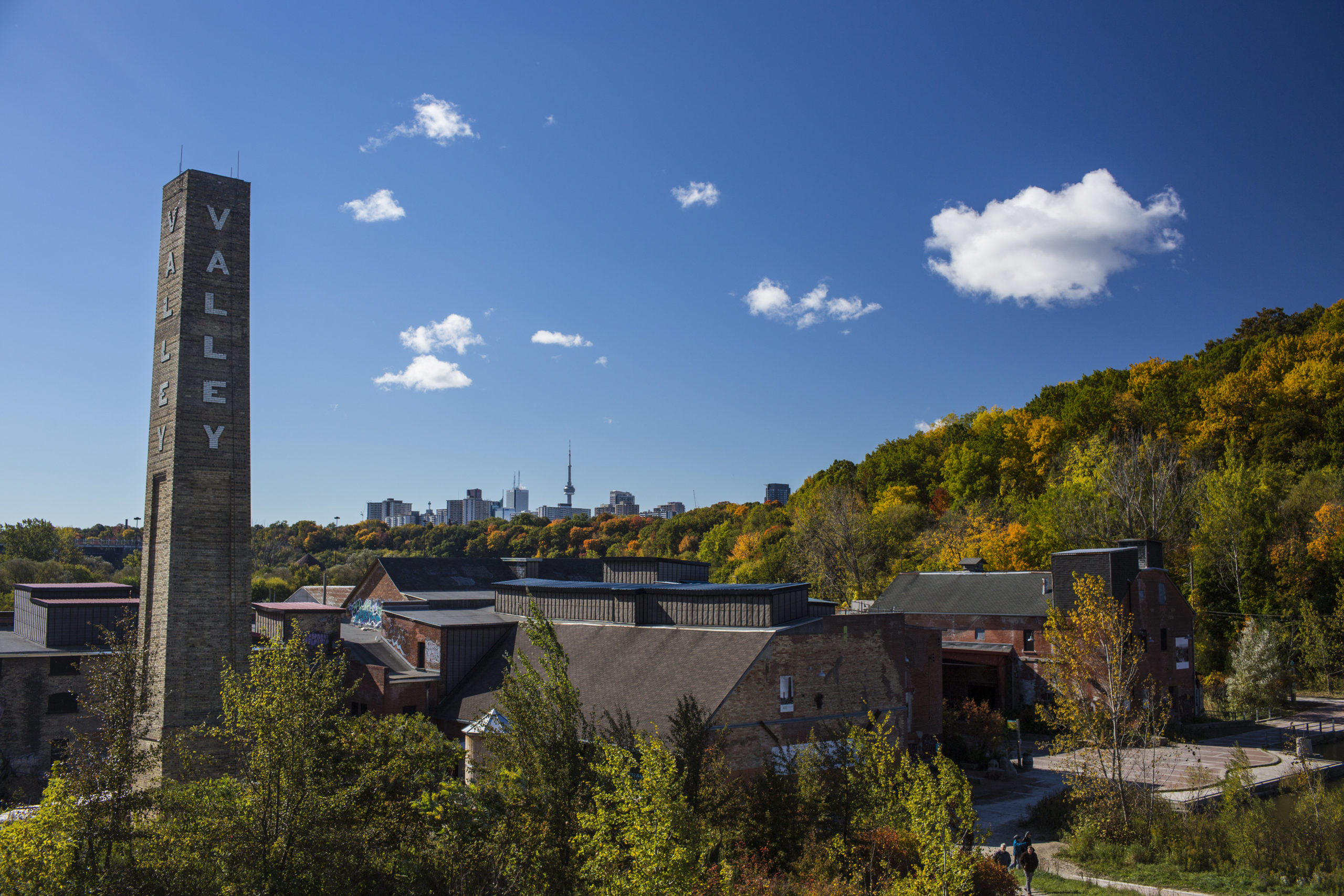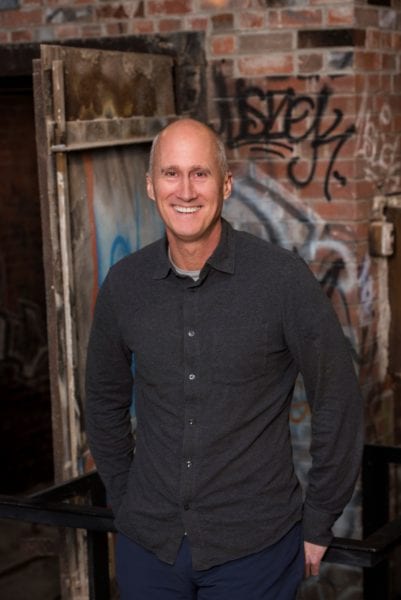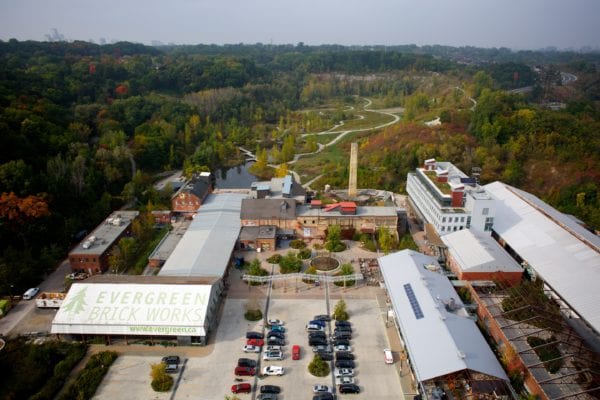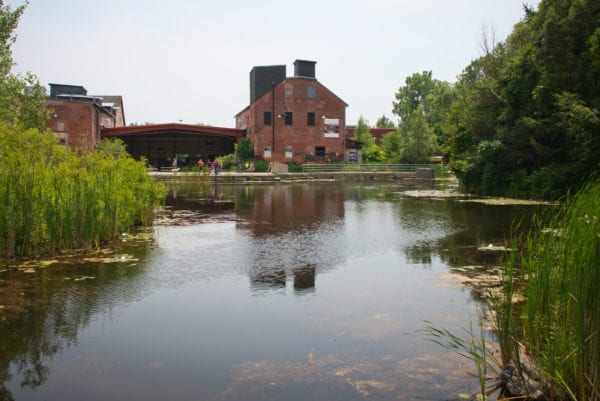
In conversation with Geoff Cape
Geoff Cape knows city building. As founder and CEO of Evergreen, he has spent his career helping cities flourish. Though 2020 will ultimately be remembered for the COVID-19 pandemic, it also marks the 10th anniversary of the highly successful Evergreen Brick Works, with over 500,000 visitors annually. More recently, he and the Evergreen team helped found Future Cities Canada, a cross-sector collaborative designed to address inequality and climate change, and the consequential challenges they bring. This fall they are launching #UnexpectedSolutions, a free, online summit showcasing a wide range of innovations designed to create cities where everyone will thrive. In anticipation of the event, Geoff Cape joined us for a chat about resiliency, real estate and the benefits of collaboration.

The Collection: What makes a resilient city?
Geoff Cape: It’s the ability to bounce back from adverse conditions, adverse circumstances. And to come back with the capacity to respond to new challenges, not just to where you were before, but to bounce back to a better spot.
TC: What has COVID-19 taught us about urban planning?
GC: That change can be made quickly. That there are a lot of necessary innovations that have been sitting in the background and now they’re starting to move…and that’s a good thing. It’s taught us that we need cities. As much as there’s some suggestion that the urban idea is gone and we’re heading back to the suburbs and the rural, I think quite the contrary. People are realizing, especially as we head into the fall, that we are a highly social animal and we need people, and we need cities.
TC: Does Toronto have the right infrastructure to meet the needs of this changing environment?
GC: No…no city in the world does. Everyone’s been caught off guard. Our infrastructure tends to be a little too stiff…inflexible, purpose-built. There’s a very narrow set of outcomes available to something like a subway system, which has presented low success during this pandemic. The assets, the infrastructure that are really shining through are those pieces that can shift and be different under different circumstances.

TC: What are some examples?
GC: A park landscape may, on some levels, be simply a place to walk your dog or sit in on a sunny afternoon. But more importantly, they’ve become multi-purpose spaces for everything like farmers’ markets, where there’s a local commerce function playing out, to a place where people can connect in ways that they can’t in their own homes. Streets are emerging with greater flexibility than they were as simply a two- or four-lane road, which seemed strictly a place for cars. Streets are unique assets because they can be converted from a space for cars into a space for restaurants. Streets are also being closed down as pedestrian avenues on weekends…it’s transformed the way people experience a city. The car is such a dominant asset class, and the idea that cars and streets are together all the time has been broken.
TC: Why did the Sidewalk Labs project fail?
GC: At the end of the day, it was one simple issue, and that was the theme of trust. Every project runs at the speed of trust. Every real estate project, every project that interfaces with the public…and Sidewalk Labs, with Google behind them, and a broader anxiety about tech firms like Cambridge Analytica and Facebook…all those big, anxiety-producing data platforms were hitting the news. Data and platform companies were called into question, and Sidewalk Labs got swept up into that question of trust.

TC: Housing prices have skyrocketed. Are there local solutions to ensure fewer barriers to entry or do people just need to move greater distances?
GC: There’s so much opportunity in Toronto. Moving away from the city might be the right solution for some, for all sorts of good reasons…they may not need an office, they may not need the density of a city to feed them. But, for the vast majority of people, we need cities, so affordable housing is required. The go-to strategy for the last number of years has been high rise development…and it’s all about ownership. But I think affordable rental is an important area for development. I also think it’s the form of real estate. Evergreen has pushed a lot of policy and strategy work around laneway housing, recognizing that there are 2500 laneways in Toronto, previously only approved for a kind-of tin shack garage at the back. The opportunity for one and two-storey live-work spaces is a no-brainer. The City’s on that now, and I think the community will begin to recognize that that’s what they should do if they’ve got a laneway. Small, low-impact housing solutions, small micro-residential housing programs [are needed]. There’s an organization called R-Hauz innovating in this space in really interesting ways, developing their first project on Queen. It’s a six-storey, wood frame development that would otherwise be a two-storey Queen Street lot. Mid-rise and low-rise solutions are available in a big way.
TC: What should real estate professionals be thinking about as they evaluate new projects?
GC: The 50-year horizon. Most infrastructure has roughly a 50-year horizon. So, as you build, think about what’s coming down the pipe that’s going to require a building to perform differently. Climate change is one. So, think about energy conservation, water conservation, mobility relationships for the live-work, coming-and-goings of the people who live inside. Think about materials. Panilization is becoming a theme for a lot of builders, which is a more efficient construction methodology. Real estate developers should be trying to innovate in that space…modular construction solutions. And, at the other end of the spectrum, is innovations around partnerships. There’s a lot to be gained in the coming years, as we become denser, where partnerships in the city are necessary. It might be with a land-owner, it might be a partnership with the adjacent community assets, whether that be a school or rec centre. It’s the notion of a community hub, where multiple activities can emerge and play out, and they’re highly flexible. If developers can find a way to weave those things together better, they’ll have a more resilient program.
TC: And with more voices at the table.
GC: That comes back to Sidewalk Labs…projects moving at the speed of trust. If developers can find a way to create partnerships early on, they build trust, they build momentum at the local level, and they turn an adversary into an advocate.

TC: What can we expect from the upcoming #UnexpectedSolutions?
GC: We have about 80 panels organized. Some incredible content looking into lessons learned from Sidewalk Labs; looking into affordable housing solutions; looking at financing models; looking at platforms to build consensus in the community; technology platforms. There’s an amazing array of panelists and speakers from around the world, in a full-blown video conference program. Normally, we would do these events at the Brickworks. It’s a situation where we’re flexing to the requirements of the time and doing it online. I think you’ll find almost anything, whether you’re a student of city building or a seasoned, long-standing leader in that realm.

TC: As someone who has successfully created one of Toronto’s great destinations, what did that teach you about city building?
GC: Success revolved around our ability to engage with three levels of government in a comprehensive way, [and with] lots of private-sector partners, and academics. We’ve also been able to bring in citizens in a robust way, whether in the farmers markets or the kids’ camps. So, there’s something profoundly relevant in the mash-up. Much of our city and much of our lives, quite frankly, is organized around single purpose channels, single-purpose mechanics. The big idea that we had for the Brickworks was to create something that would be flexible and fluid to meet different needs. And, we couldn’t forecast…we were building the buildings with a design direction and, six months in, we thought we needed to do something on site because approvals could take years. So, we launched the farmers’ market. It wasn’t in our plan, but it was a huge success. So, we went back to our design team and said, “We haven’t got any concepts that relate to farmers markets or spaces like that. Design in those flexible spaces.” So, collaboration and multi-functional space has been its success, and a lot of that is transferable. I look at the Honest Ed’s site. They intentionally designed some almost ambiguous spaces to support convening and gathering without a clear view of the program yet. And that’s a good thing.
#UnexpectedSolutions begins October 20. For more information, visit unexpectedsolutions.futurecitiescanada.ca

